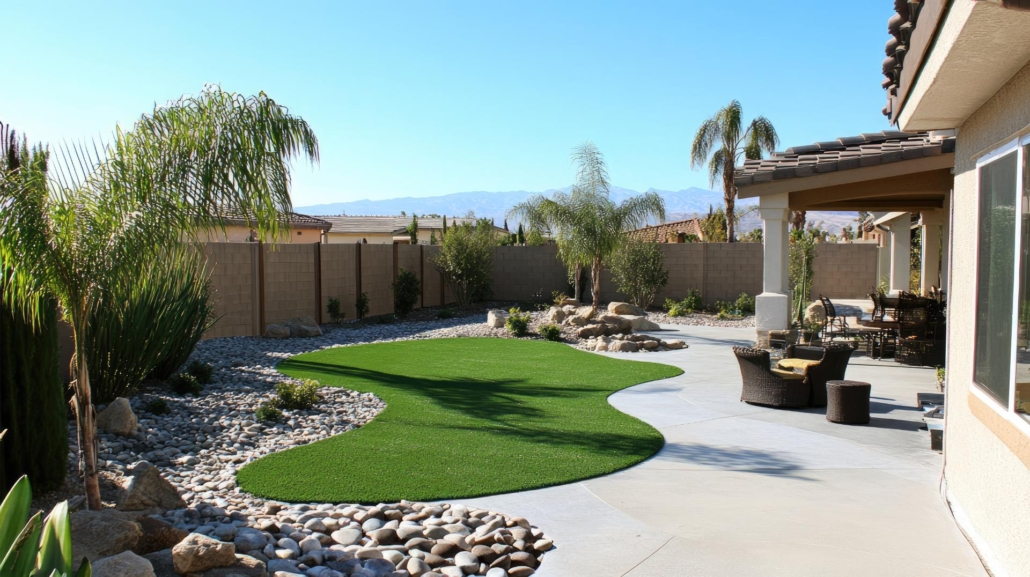How to Get Rid of Mold on Artificial Turf?


You invested in a perfect, low-maintenance lawn for a reason. You wanted a beautiful, green space without the endless weekend chores. So what’s that ugly spot doing in the middle of your paradise? The sight of mold on artificial turf is more than just an eyesore. It’s a worry about your family’s health and your investment.

Think of your high-quality artificial turf as a fortress. It’s built to resist invaders like mold. But even the best fortress has weaknesses, and mold’s best friend is standing water. The number one cause is poor water drainage, which leads to water pooling on the surface. This creates the damp, shady hideout mold loves.
The only other thing it needs is food. Organic debris, like pet waste, is food for grass mold, a problem not found on natural grass.
Mold is sneaky, but it leaves clues. Identifying a problem area early makes tackling a moldy lawn much easier. Keep an eye out for:
These signs can pop up anywhere, though they are less common in the dry climates typical for artificial grass in Las Vegas installations. And don’t forget your nose. A persistent musty smell is a dead giveaway for mold and mildew.
Once you’ve spotted mold on artificial turf, it’s time to act. Don’t panic. For small outbreaks, you already have everything you need to fight back. This DIY method is safe for most high-quality artificial grass products, but always test it on a small, hidden spot first.
For your safety, always wear gloves and eye protection when cleaning.
An ounce of prevention is worth a pound of cure. The best way to handle mold on artificial turf is to make sure it never gets a foothold. That defense, which is crucial for any artificial grass for landscaping, starts from the ground up. Prevention begins with installing artificial turf correctly; a professional artificial grass installation ensures the synthetic turf is properly installed over a permeable base with proper drainage tile.
Proper lawn maintenance is one of the most effective easy landscaping ideas to protect your investment. Once a week, clear off leaves and dirt. If you have pets, clean up solid waste right away and rinse urine spots often.
The vinegar trick works wonders on minor spots. But what if you’re facing a widespread invasion, a stubborn, moldy lawn, or a musty smell that just won’t quit? That’s when it’s time to call in the pros. For severe issues, contact our artificial grass specialists for an expert opinion.
The whole point of a perfect lawn is to enjoy it, not to find new things to worry about. Here’s the good news: mold is an opportunist, and you can shut it down before it starts. A clean lawn with proper drainage simply doesn’t give mold the damp, messy home it’s looking for. That straightforward, consistent routine is what protects your investment, ensuring your synthetic lawn stays the beautiful, healthy space you wanted all along.
Yes, it can be. The CDC confirms that mold exposure can trigger allergic reactions like coughing, itchy eyes, and stuffy noses. Kids and pets are more vulnerable because they’re closer to the ground and have developing immune systems. It’s always best to remove mold immediately.
While mold won’t eat the plastic fibers of modern fake grass, it can cause ugly, permanent stains and discoloration. Worse, the constant moisture that helps mold thrive can degrade the turf’s backing and base over time, cutting its lifespan short.
It depends on your lawn’s use. For pet owners, a weekly disinfection of urine spots with a pet-safe cleaner is a smart move to control bacteria and odors. For general use, a deep clean once or twice a year is usually plenty. Always clean up food and drink spills immediately so they don’t become a buffet for mold.

Festival Turf
Phone: 844-702-8873
Email: [email protected]
Las Vegas HQ Hours
Monday-Friday: 8:00am – 4:00pm PST
Saturday: 8:00am – 12:00pm
Sunday: CLOSED

 What is Blue Turf and Why is it Popular
What is Blue Turf and Why is it Popular